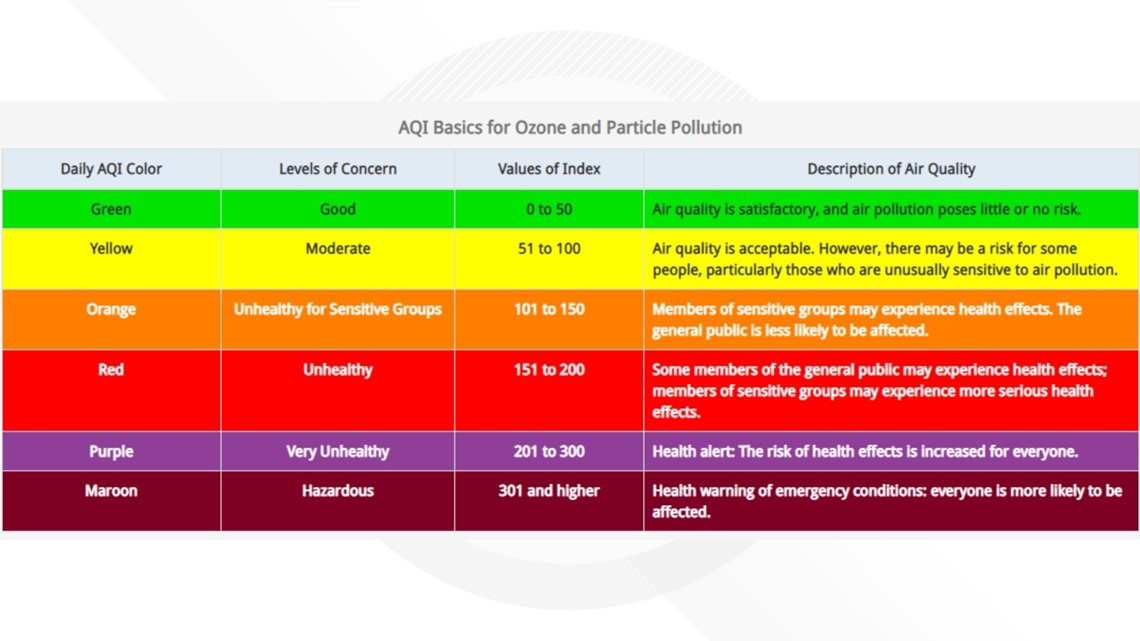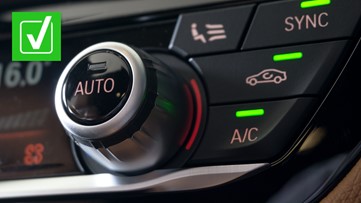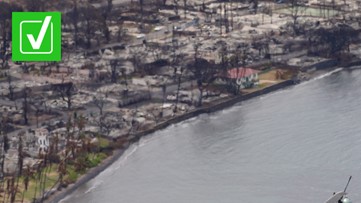Dozens of large wildfires have burned hundreds of thousands of acres throughout the United States in 2023.
Many people online are searching for ways to protect themselves from wildfire smoke. From masks to air conditioning, VERIFY is giving you six tips on how to stay safe outdoors and in your home.
THE SOURCES
- U.S. Environmental Protection Agency (EPA)
- U.S. Centers for Disease Control and Prevention (CDC)
- The American Society of Heating, Refrigerating and Air Conditioning Engineers (ASHRAE)
- The California Air Resources Board (CARB)
- The American Red Cross
- State and local health departments
- AutoDeal
- Eden Tyres & Servicing
- Ken Brown Motors
- A study published in Environmental Science & Technology
- Rob Poinsett, auto body technician at Team Collision Center of Ewing in Ewing, New Jersey
WHAT WE FOUND
1. Stay indoors as much as possible.
The best way to protect yourself from wildfire smoke is to stay indoors as much as you can with the windows and doors closed, state and local health departments say.
Wildfire smoke can make anyone sick, but children, people who are pregnant, and those with asthma, other lung diseases or heart conditions need to be especially careful about breathing it.
The Centers for Disease Control and Prevention (CDC) also recommends against activities that increase indoor air pollution, such as burning candles, using gas, propane or wood-burning stoves, and vacuuming, during smoky conditions.
2. Check your local air quality.
The Air Quality Index (AQI) is a tool from the Environmental Protection Agency (EPA) that tells you about the air quality in your area and which groups might be affected by it.
The AQI ranges from 0 to 500 and is divided into six categories: good, moderate, unhealthy for sensitive groups, unhealthy, very unhealthy and hazardous. Each category has a color and corresponds to a different level of health effects.


You can check the air quality in your area on the AirNow website. For guidance about exercising outdoors based on the air quality, click here.
3. Wear a well-fitting N95 mask or respirator if you have to be outdoors.
If staying indoors is not an option, wearing a well-fitting N95 mask or respirator can reduce your exposure to wildfire smoke, the EPA says.
Cloth and surgical masks will not filter out wildfire smoke particles. Instead, you should look for masks that have the word “NIOSH” and either “N95” or “P100” printed on them.
The mask should also have two straps that go around your head. The CDC has a guide to using an N95 respirator on its website.
N95 masks are not an option for everyone, though, as they are not designed to fit children and are not as effective for people with facial hair. People with lung or heart health issues should ask their doctor if it is safe for them to wear an N95 mask.
4. Check your air conditioner’s filter and settings.
Even if your windows and doors are closed, wildfire smoke particles can still enter your home through small openings, cracks, or bathroom and kitchen fans that vent to the outdoors, according to the EPA.
Running your air conditioner can help filter out wildfire smoke from within your home.
If you have a central air conditioning system, the Red Cross recommends using high efficiency filters to capture fine particles from the smoke. The American Society of Heating, Refrigerating and Air Conditioning Engineers (ASHRAE) told VERIFY that the filter should be replaced at least every two days during smoky conditions since it will be catching many particles.
Some central air systems may also bring in outside air through a vent called the fresh air intake. The EPA recommends closing that vent, which is typically located on the outside of your home, or turning the system to recirculate mode.
The California Air Resources Board (CARB) also says people should set the fans on their thermostats to “on” to ensure the air is being constantly filtered, instead of the “auto” function that runs the system intermittently.
5. Purchase a portable air cleaner or make a temporary air purifier.
People without air conditioning can still take steps to filter wildfire smoke out of their homes.
The EPA says you can purchase a portable air cleaner that does not make ozone. Manufacturers sometimes refer to ozone as “activated oxygen, super oxygenated, or energized oxygen,” according to CARB.
If portable air cleaners aren’t available or affordable, CARB suggests making a temporary air purifier for the inside of your home by using a box fan, filter with a MERV rating of 13 or higher, and duct tape. You’ll duct tape the air filter to the back of the box fan and replace filters as needed.
6. Use the recirculate button in your car.
The recirculate button in your car does help reduce some air pollution from entering your vehicle.
“It's not a foolproof way, but it will keep most of the contaminants out for a small period of time,” Rob Poinsett, an auto body technician at Team Collision Center of Ewing in Ewing, New Jersey, told VERIFY.
A 2013 study published in the Environmental Science & Technology journal found that using the recirculate button can help reduce the driver’s level of exposure to outside air pollution to 20% of on-road levels, keeping about 80% of those pollutants outside.
The air recirculation setting in most vehicles usually appears as a button with an arrow turning around inside the shape of a car.










